Nail care: Complications (ages 11 - 13)
Good Skin Knowledge lesson plan
Time: 45 min
Objective
Students will be able to:
Identify three main parts of the nail
Provide at least one example of a nail complication
Explain at least two ways to take care of their nails
Materials
Assessment
During Introduction to New Material, see if students are able to state the three parts of a nail after the exercise.
During Introduction to New Material, assess students’ understanding of material by having them summarize information from Nail Complications handout.
During Guided Practice, evaluate students’ current knowledge of nail care during game.
During Closing, assess students’ grasp on the material by asking review questions.
Opening
2 minutes
Explain that it is important we take care of our nails. We tend to ignore them, but our nails can tell doctors a lot about our health.
Say today they are going to talk about nails and how to take care of them as well as some of the complications that might arise.
Introduction to new material
20 minutes
Materials
Tell students to hold their hands out in front of them. Ask if any students have painted nails; if they do, use the worksheet that will be passed out.
Pass out Nail Diagram worksheet and tells students to fill out the parts of nail as they go along.
Explain different parts of nails:
The area right under your nail has a little pocket called the matrix. What’s it called? (Students should repeat “the matrix”). This is a little pocket that keeps making new cells. When new cells form, they push old ones out of the pocket, or matrix. And by the time the old cells come out…they’re dead! Your nails are dead cells; that’s why it doesn’t hurt to cut them. What’s the little pocket under the nail called? (Students should respond “the matrix”).
You may have heard about the cuticle. This part of your nail is the tiny sliver of skin around the nail. This protects the matrix from germs. Like a wall almost! Can you all see the cuticle? (Facilitator points at his/her own and walks around room to show students).
Lastly is the lunula—[loon-yoo-la]. Can you guys repeat that? (Lunula). You might only be able to see it on your thumb. If you can’t see it at all, it’s ok! This is actually part of the matrix—the pocket under your nail — that makes new cells and pushes out the old ones!
To review, ask students if they can name the three parts of the nail.
After this exercise, explain there are a lot of things that can happen to your nails that can turn them from pretty to painful.
Pass out Nail Complications handout.
Break students into groups/pairs.
Assign certain groups to read specific sections of handout.
After 5 minutes or when all the students are finished, ask students from each assigned section to summarize each type of complication they read about for the class.
Guided practice
15-20 minutes
Explain they will now be playing a game called: Do or Don’t. Directions: Split the class into two teams. One person from each team will come up to the front of the class.
Make a statement about nails, and the team has to decide if this is something you should “do” or something you “don’t” do. The person from the team who raises their hand first gets to answer.
Variation of game: If you want to make it more kinetic; instead of having students raise their hands to say the answer, make-up a movement/gesture for “do” and a movement/gesture for “don’t.” Whoever does the correct movement gets the point. If they both do the correct movement, the point goes to whoever does the movement first.
Students get one point for each correct answer. If they can guess the reason why they should or should not do what the you are talking about, they get an extra point. Depending on time constraints, skip this part and just tell students the reason why the statement is a “do” or “don’t” after the answer is revealed.
Team with the most points win.
Ask the students the following “Do’s” and “Don’ts” to Nail Care: (If students cannot guess correctly why they should do or not do something, Facilitator will explain.)
Keep your nails really long. (DON’T.) We should keep our nails short and clean. If we have long nails, more germs can collect under them and you can get an infection.
Eat a healthy balanced diet. (DO.) This helps keeps your nails strong.
Rub lotion on your nails. (DO.) Helps keep your hands and nails moist!
Use nail polish remover more than twice a month. (DON’T.) Nail polish removers have chemicals that are very harsh on your nails and can dry them out.
Push back your cuticles. (DON’T.) Remember the cuticle is the tiny sliver of skin around your nail, so you need to be gentle with it. If you push it back or cut it, the nails can get infected.
Make sure your nails are clean. (DO.) Keeping clean nails helps prevent infection and keeps them healthy.
Bite your nails. (DON’T.) Nail biting can make the skin around your nails bleed and make your fingers sore. You also have a lot of germs under your nails, and you might cause an open sore to form letting in all those icky germs.
Closing
5 minutes
Ask review questions:
Name the three parts of the nail.
Can you name something you should do to take care of your nails?
What are some nail complications?
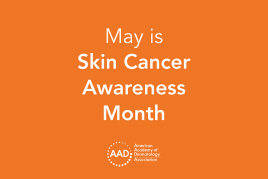 Think sun protection during Skin Cancer Awareness Month
Think sun protection during Skin Cancer Awareness Month
 How to care for your skin if you have lupus
How to care for your skin if you have lupus
 Practice Safe Sun
Practice Safe Sun
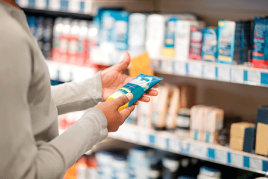 Sunscreen FAQs
Sunscreen FAQs
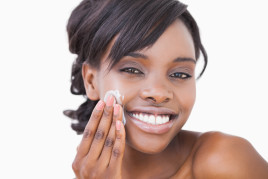 Fade dark spots
Fade dark spots
 Hidradenitis suppurativa
Hidradenitis suppurativa
 Laser hair removal
Laser hair removal
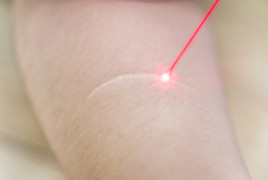 Scar treatment
Scar treatment
 Botox
Botox
 Kids' camp - Camp Discovery
Kids' camp - Camp Discovery
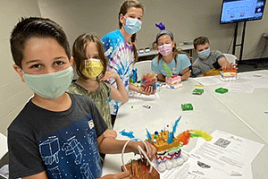 Dermatologist-approved lesson plans, activities you can use
Dermatologist-approved lesson plans, activities you can use
 Find a Dermatologist
Find a Dermatologist
 Why choose a board-certified dermatologist?
Why choose a board-certified dermatologist?